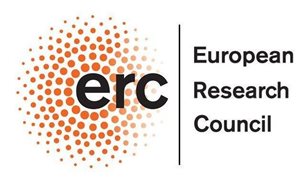
Detecting hidden genetic defects by applying an existing method to an existing datasets. Researchers at Radboud university medical center have succeeded: they showed that the 'Expansion Hunter' method can detect errors in the DNA that lead to repeat expansion diseases, such as the movement disorder ataxia. This result provides guidance to fellow researchers worldwide on how to use this method to diagnose patients with genetic disorders.
With current diagnostic technology for genetic disorders, it is possible to map all 20,000 genes in our DNA at once. Doctors are increasingly opting for this so-called exome technique: it is widely applicable and increasingly provides molecular diagnoses. The exome technique is particularly suitable for finding simple changes in DNA.
In a publication in Genetics in Medicine, researchers from the Radboudumc have now shown that the technique can also be used to find a much more difficult type of change in the DNA: so-called repeat expansions. This is a type of mutation in which the same number of, usually three, building blocks of DNA (nucleotides) in the genome are repeated many times. Examples of disorders that arise from repeat expansions are fragile X syndrome and Huntington's disease. Erik-Jan Kamsteeg, laboratory specialist at the Clinical Genetics Department: "Sometimes we knew there had to be an abnormality in the DNA, but it did not show up in the exome test. Then the dataset was ignored, discarded as it were. But we knew there were gaps; that we weren't seeing everything."
At this, the researchers investigated the possibility of applying repeat expansion analysis to already available data from 2,700 patients with movement disorders. Reading out their genes had previously revealed no cause, even though there was a very strong suspicion of a hereditary defect in this group of patients. With this new analysis the cause of the defect was found in seven patients, without having to carry out additional laboratory experiments.
Associate Professor of Genome Bioinformatics Christian Gilissen: "These numbers may seem small, but the impact on diagnostics is of great value. If every genetic center starts doing this, and we have now shown that this can be done easily without additional experiments, you can obtain a diagnosis for a lot of patients for whom the cause of their condition has remained unknown. We know that a diagnosis in itself is very important for the patient, because it provides certainty and an explanation, can give a prognosis of the course of the disease, but also the possibility of contact with patients with the same diagnosis." In addition, finding the right molecular diagnosis also helps to determine the risk for the disorder in children and other relatives of patients.
Causes of ataxia
In this case, the researchers looked in particular at the movement disorder ataxia, because repeat expansions are a known cause of these disorders. Ataxia is primarily caused by disease or damage to the cerebellum. The main function of the cerebellum is to ensure perfect adjustment in the cooperation between muscles, so that a smooth movement occurs. When the cerebellum is affected, people develop problems with their motor skills: walking, articulating and swallowing become more difficult, and they may experience trembling hands or double vision. The seven new molecular diagnoses now found for ataxia consist of six relatively known causes, which despite years of searching had not been detected before. The researchers also found one exotic dominant ataxia (type 12) that to date has only been described three times worldwide.
About the publication in Genetics in Medicine
Systematic analysis of short tandem repeats in 38,095 exomes provides an additional diagnostic yield - Bart PGH van der Sanden, Jordi Corominas, Michelle de Groot, Maartje Pennings, Rowdy PP Meijer, Nienke Verbeek, Bart van de Warrenburg, Meyke Schouten, Helger G Yntema, Lisenka ELM Vissers, Erik-Jan Kamsteeg and Christian Gilissen.
-
Want to know more about these subjects? Click on the buttons below for more news.
More information
Pauline Dekhuijzen

wetenschaps- en persvoorlichter
Related news items

The future of laboratory animal research More attention to living conditions of laboratory animals
16 May 2022 On May 9, a meeting took place at the Radboudumc as a result of the launch of the Dutch Transparency Agreement on Animal Testing. The Radboudumc is one of the twenty signatories and has thus committed itself to openly and transparently communicate its vision and policy with regard to animal testing. go to page
European grants for groundbreaking Radboudumc research Professors Roshan Cools and Peter Friedl receive ERC Advanced Grant
26 April 2022The European Research Council (ERC) is awarding grants to Roshan Cools and Peter Friedl, both professors at Radboudumc. While Cools will investigate how brains control behaviour in (stressful) situations, Friedl will work on developing a new cancer therapy.
go to page
Tiny blood vessels, big problems Radboudumc receives grant for international collaboration
3 November 2021 The Radboudumc, together with the University of Cambridge, receives a grant of €1.8M from three collaborating cardiac foundations for international research into the small blood vessels in the brain. This study will be led by Neurologist Frank-Erik de Leeuw and internist Niels Riksen. go to page
Nijmegen literally puts Digital Health on the map Flourishing ecosystem gets its own interactive overview
22 July 2021 Digital Health is thriving in the Nijmegen region, where it contributes to better care and health and also creates jobs. To bring developers and end users even closer together, The Economic Board and the Radboudumc are introducing the Interactive Digital Health map. go to page
Newborn screening in sight through the discovery of novel disease biomarkers by new technique
8 July 2021New biomarkers that can be used in the newborn screening protocol, also known as the neonatal heel prick, Karlien Coene and colleagues joined forces with scientists at the Radboud University’s FELIX laser laboratory. They published their findings in The Journal of Clinical Investigation.
go to page
